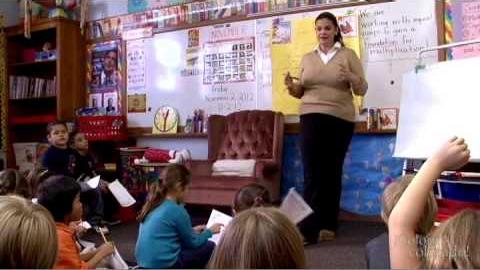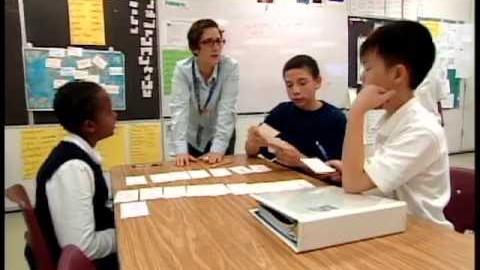Match, Sort, and Order

Matching, sorting, and putting things in order can be engaging ways for students to review vocabulary, content, and new concepts. This strategy is part of Colorin Colorado's ELL Strategy Library and can be used to support academic language development for all students.
Strategy Overview
How This Strategy Supports Students' Language Development
Matching, sorting, and putting things in order gives students hands-on opportunities to practice the content and language they are learning. Extension activities such as providing explanations or writing summaries can also provide valuable practice of skills such as speaking, writing, and critical thinking.
Students can use a variety of items in these activities, including:
- Vocabulary flashcards
- Images
- Numbers, math facts, or math visuals
- Realia
- Parts of a story
- Dates, facts, or events
Different types activities include:
- Match: Students match different items, such as vocabulary and pictures.
- Sort: Students sort items into categories that you assign, or they can come up with their own categories for a group of items.
- Order: Students put items in order, such as the stages of a life cycle, the parts in a story, or historical events. (See more in our Picture Retell strategy.)
- Photo gallery: In this activity, student match photos and vocabulary words. However, there are multiple matches possible, and students must then explain their reasoning for their matches.
Step-by-Step Instructions
Before the activity
As you plan your activity, determine:
- Your target content
- What kind of activity (match, sort, or order) is the best fit for your objectives
- If the students will be using hands-on items or doing the activity digitally
- If students will be working individually, in partners, or in small groups
- How students can practice academic language and whether any scaffolds are needed, such as word banks, sentences frames, or graphic organizers
- How to incorporate students' languages, either through translated terms or peer discussion
During the activity
- Explain how the activity works to student. Model a few examples.
- As students start the activity, walk around to check their comprehension.
After the activity
- Ask students to explain their answers to their partners or group.
- Be sure to leave time for any extension activity you have planned, such as explanation or summarization, or to plan it as a follow-up activity for the next day.
- Use the activity regularly so that students get more familiar with it and you can increase the level of challenge over time.
Differentiation
- Use scaffolds such as sentence frames or word banks.
- For entering/emerging students, you may wish to group "like" items together; for more advanced students, mix up the items they will be working with to add to the challenge.
- Give entering/emerging students "clues," such as blank spaces for the letters of the correct word or the first letter of the word.
- Give students a chance to get familiar with the activity in their heritage languages first.
- Ask students to create a matching or sorting activities for their peers.
Lessons Learned
- There are many ways to structure a match, sort, or order activity. Think carefully about what you which skills and content you want students to practice.
- Think about whether any of the terms you are using have multiple meanings or whether there might be anything confusing in the content you are asking students to work with.
- Try different variations; make note of what works best for future activities. Matching and sorting are great activities to use across the curriculum, especially if students are comfortable with the format and process.
- See more ideas on how to use visuals with ELLs in our related strategy.
Co-Teaching Considerations
Content or Grade-Level Teacher
- Choose the key content.
- Find images or items that match the content if needed and create any visuals.
English Language Development Teacher
- Purposefully partner students for the activity.
- Provide sentence frames.
- Monitor students’ explanations.
- Work with a small group, if necessary.
Examples
Here are some brief examples from across the curriculum. You can see more in our slide show about using visuals.
| Topic | Activity |
|---|---|
Science: The four seasons
|
|
Language Arts: Flash cards for putting parts of a story in order |
Source: Burro's Tortillas by Terri Fields. Illustrated by Sherry Rogers. All images used with permission. |
| Science: Putting a butterfly life cycle in order |
|
| Math: Matching shapes and vocabulary words |
|
Social studies: Matching vocabulary words and images |
|
| Science: Sorting pictures based on whether they are biotic or abiotic |
Source: Excerpt from Chapter 1 of Disruptions in Ecosystems, a middle school unit aligned with the Next Generation Science Standards and available on the NGSS website. |
Resources
- Making Connections Through Sorting (AdLit.org)










